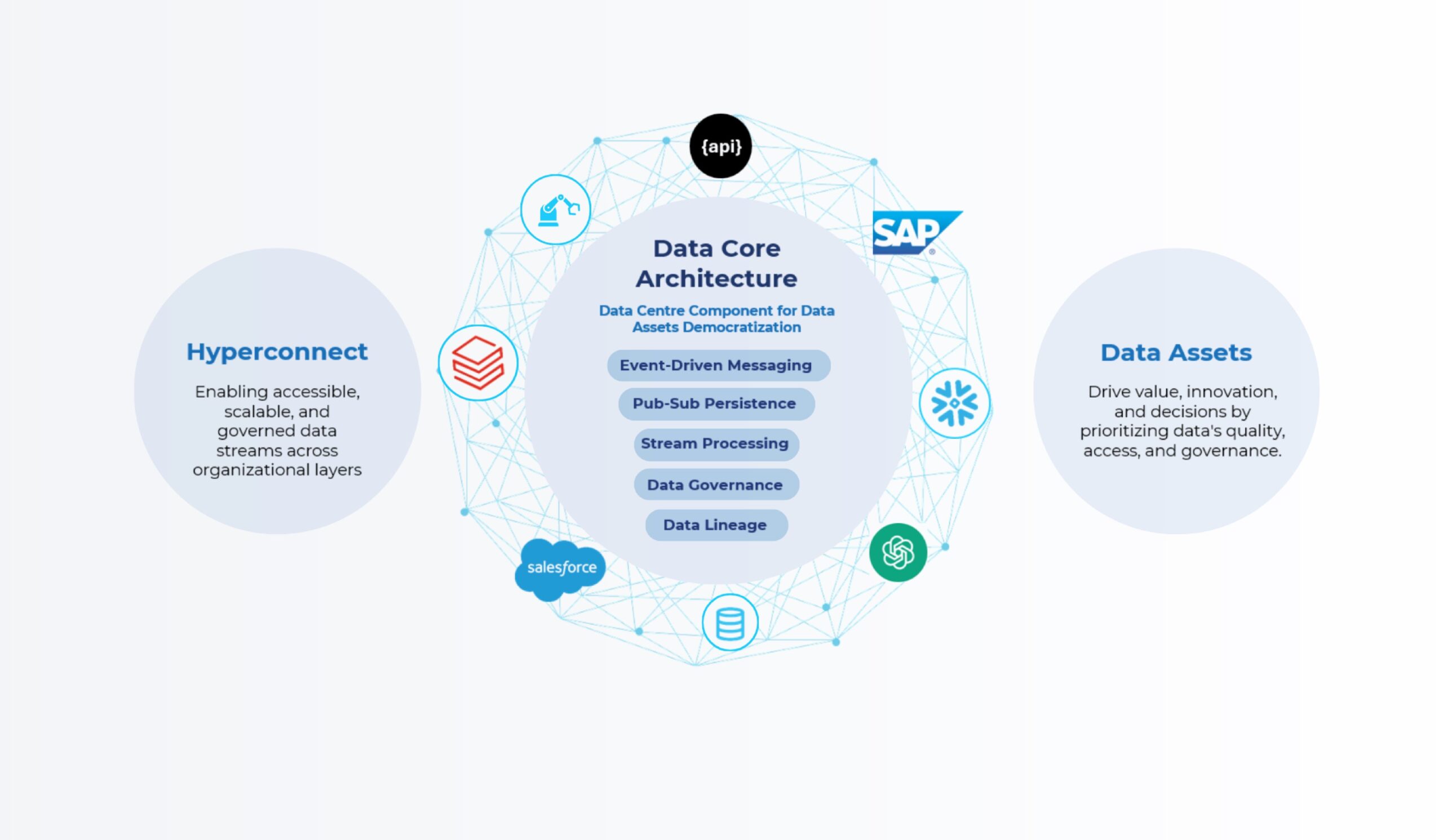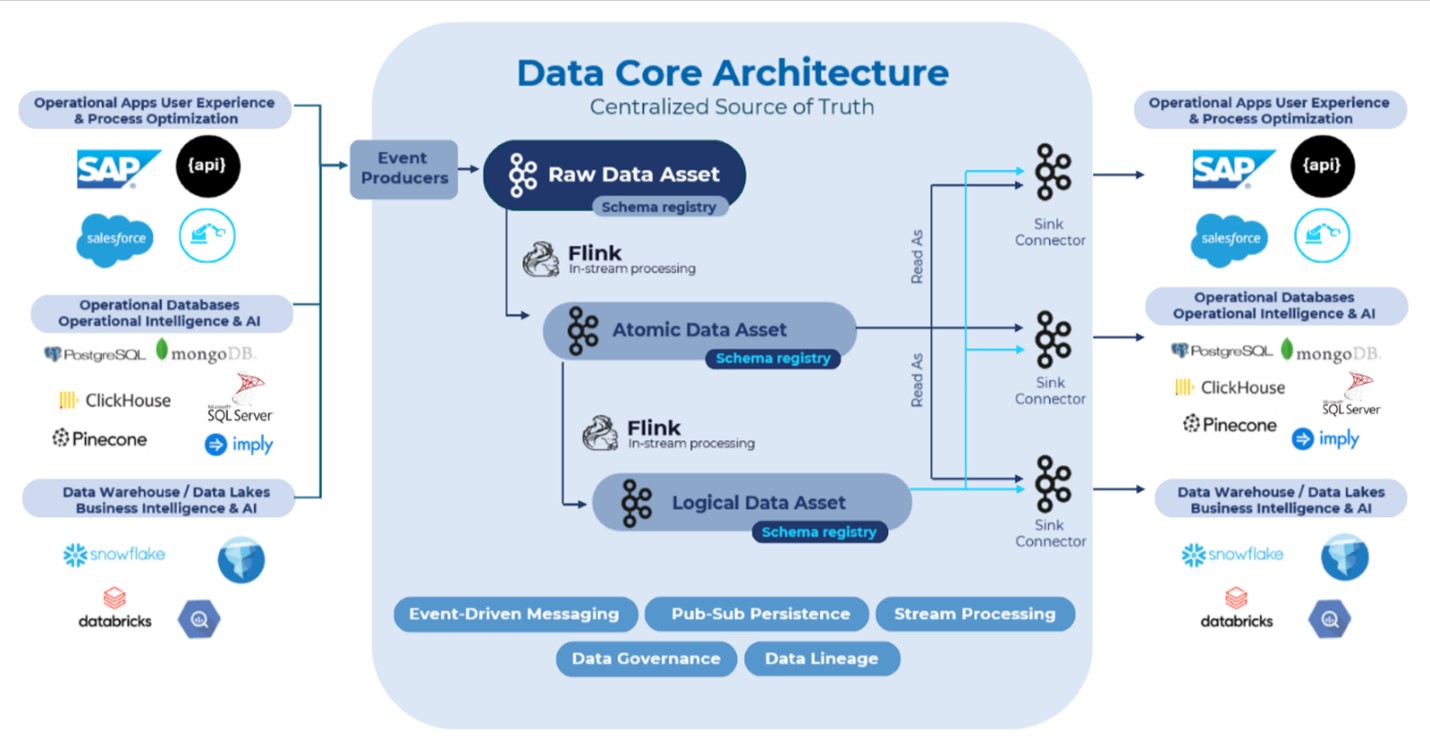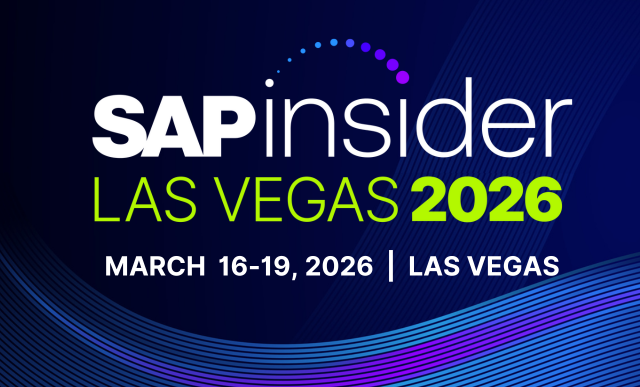Data Core Architecture: The Evolution of Data Fabric
Meet the Authors
Key Takeaways
Data Core Architecture represents a shift towards a data-first approach, focusing on agility and modularity through Atomic and Logical Data Assets, addressing the inadequacies of traditional data integration methods.
Real-time data streaming and event-driven messaging are crucial components of Data Core Architecture, enabling seamless communication and insights, which is vital for businesses to remain competitive in a rapidly evolving digital economy.
SAP partners like Onibex play a significant role in facilitating Data Core Architecture, leveraging real-time data integration and external insights to empower organizations with improved data governance and the ability to drive innovation.
The digital economy demands more from data than ever before. Concepts like Data Fabric offered initial promise, aiming to connect data across organizations, addressing the challenge of data silos. However, as data ecosystems grew exponentially, traditional integration methods proved inadequate. Forrester recognized this shift, introducing “Data Fabric 2.0,” incorporating real-time data management. Still, gaps remained, particularly in real-time data streaming, which is crucial for both processing and temporary persistence.
The post-COVID acceleration of AI and automation further exposed these limitations, highlighting the need for agile business innovation. Data governance and DataOps emerged to address data quality and operational efficiency, but a holistic solution was still missing. Enter Data Core Architecture.
Explore related questions
What is Data Core Architecture?
Data Core Architecture is a comprehensive approach enabling organizations to become truly data driven. It acts as the central nervous system for data, democratizing access while maintaining governance. Its key features include:
A data-first approach: Traditional systems focused on process, resulting in a tangle of rigid interfaces. Data Core Architecture flips this by focusing on data. Use cases become combinations of Atomic Data Assets consisting of data models like customers, products, orders, and Logical Data Assets that apply business logic like “Available-to-Sell Inventory” or “Customer 360 View.” This modularity fosters agility and scalability.
A layered approach to data democratization: Data Core Architecture structures data in layers, optimizing usability. Raw data is first ingested, then refined into Atomic Data Assets before being transformed into Logical Data Assets within the system. This approach ensures data is readily available for various use cases.
Data Core Architecture relies on five key components:
- Event-driven messaging for real-time communication between systems.
- Publish and subscribe persistence to decouple systems for seamless data flow.
- Stream processing to transform raw data into real-time Logical Data Assets.
- Data governance that ensures data discoverability and Data Assets management.
- Data lineage for traceability and quality assurance.
Enabling Data Core Architecture for SAP
SAP partners like Onibex play a crucial role in enabling Data Core Architecture, particularly for organizations leveraging SAP. Their expertise in real-time data streaming, data integration, and metadata management allows SAP users to:
- Seamlessly integrate SAP data: Onibex’s pre-built SAP real-time data extraction capabilities enables the integration of data from various SAP systems like S/4HANA, ECC, and EWM into Data Core Architecture. This liberates SAP data entities in real time while maintaining data consistency, creating a centralized source or truth, for operational, analytical or AI applications to “plug into” or subscribe to.
- Extend SAP data with external insights: Onibex enables the enrichment of SAP data with external data sources, providing a more holistic view of the business. This is essential for creating comprehensive Logical Data Assets, which may require data from CRM, marketing automation, and other systems.
- Real-time insights for SAP operations: Onibex empowers SAP users with real-time access to critical business data, enabling faster and more informed decision-making. This helps in optimizing SAP-driven processes, such as supply chain management, order fulfillment, and financial reporting.
Bridging the Technical Communication Gap
A key challenge in data initiatives is the communication gap between business and technical teams. Domain-Driven Design (DDD) addresses this by establishing a “ubiquitous language” – a shared understanding of data and business logic. The One Journey methodology provides a structured approach to implementing DDD within a Data Core context, guiding organizations through the model discovery and connection phases. For example, Onibex’s metadata management capabilities help organizations effectively translate business needs into technical implementations within the Data Core Architecture, particularly within the context of SAP implementations.
Thus, Data Core Architecture, powered by solutions like Onibex, simplifies the complexities of data integration, governance, and management and allows businesses to focus on what matters most: leveraging data to drive innovation.
What This Means for SAP Insiders
Onibex helps SAP users unlock the full potential of their SAP data. By seamlessly integrating data into a Data Core Architecture, SAP partners like Onibex enable organizations with real-time insights, improved data governance, and better support for data-driven initiatives.
Data Core Architecture modernizes SAP data integration. Data Core Architecture facilitates the ingestion and integration of data from various SAP modules. This integration is accelerated by solutions like low-code integration and pre-built connectors provided by partners like Onibex to simplify SAP data integration. This reduces the complexity and cost of traditional integration approaches.
Organizations can be data-driven and innovative. By providing a unified and real-time view of SAP data, companies like Onibex empower users to drive innovation in their SAP landscape, enabling new use cases and supporting digital transformation initiatives.








